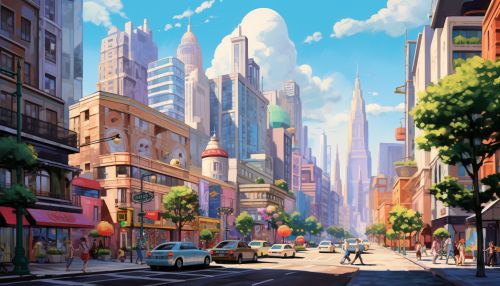Urbanization
Introduction
Urbanization is the process by which towns and cities are formed and grow due to an increase in the number of people living and working in urban areas. It is a product of population shift from rural areas to urban areas, and the ways in which societies adapt to this change. The process is often associated with the industrialization and modernization of a country.


History of Urbanization
Urbanization, as a process, has a long history that dates back to ancient times. The first urban settlements date back to 3500 BC in the ancient regions of Mesopotamia, Indus Valley and Ancient Egypt. These cities were often fortified and contained a complex system of institutions, hierarchy, and infrastructure. The process of urbanization intensified with the advent of agriculture, trade, and the development of transport infrastructure.
Factors Influencing Urbanization
Urbanization is influenced by a variety of factors, both push and pull, that drive people to move from rural to urban areas. These factors can be broadly categorized into economic, social, and environmental factors.
Economic Factors
Economic factors are often the primary driving force behind urbanization. The promise of better job opportunities, higher wages, and improved living standards draw people to cities. Industrialization, which is often concentrated in urban areas, also plays a significant role in urbanization.
Social Factors
Social factors such as better education, healthcare facilities, and lifestyle also contribute to urbanization. Cities often offer a wider range of social services and amenities, attracting people seeking a better quality of life.
Environmental Factors
Environmental factors such as climate change, natural disasters, and agricultural challenges can also contribute to urbanization. These factors can make rural living difficult, pushing people towards urban areas.
Impacts of Urbanization
Urbanization has both positive and negative impacts on society and the environment.
Positive Impacts
Urbanization can lead to economic growth, improved infrastructure, and increased access to services and opportunities. It can also foster cultural diversity and innovation.
Negative Impacts
However, rapid and unplanned urbanization can lead to a range of problems such as overcrowding, pollution, inadequate public services, and social inequality. It can also lead to the loss of agricultural land and biodiversity.
Urbanization in the Modern World
In the modern world, urbanization is a global phenomenon. According to the United Nations, more than half of the world's population now lives in urban areas, and this figure is expected to rise to 68% by 2050. This rapid urbanization presents both opportunities and challenges for sustainable development.
Future of Urbanization
The future of urbanization is likely to be shaped by technological advancements, demographic trends, and policy decisions. Sustainable urbanization, which aims to balance the economic, social, and environmental aspects of urban development, is increasingly being recognized as a key goal for the future.
